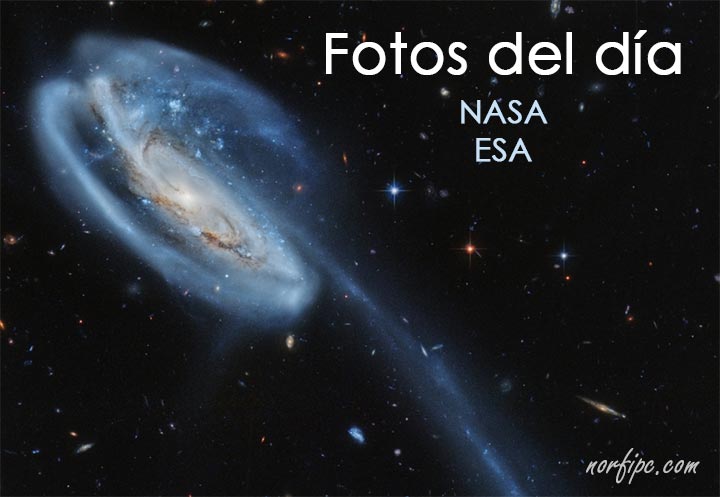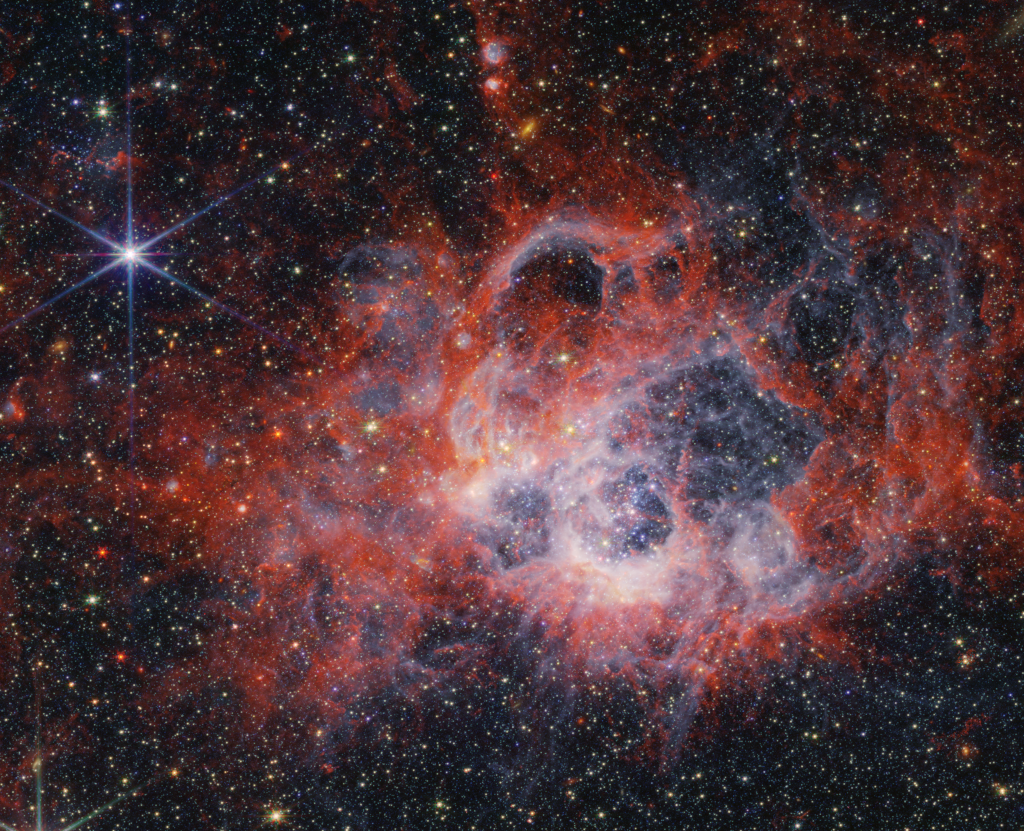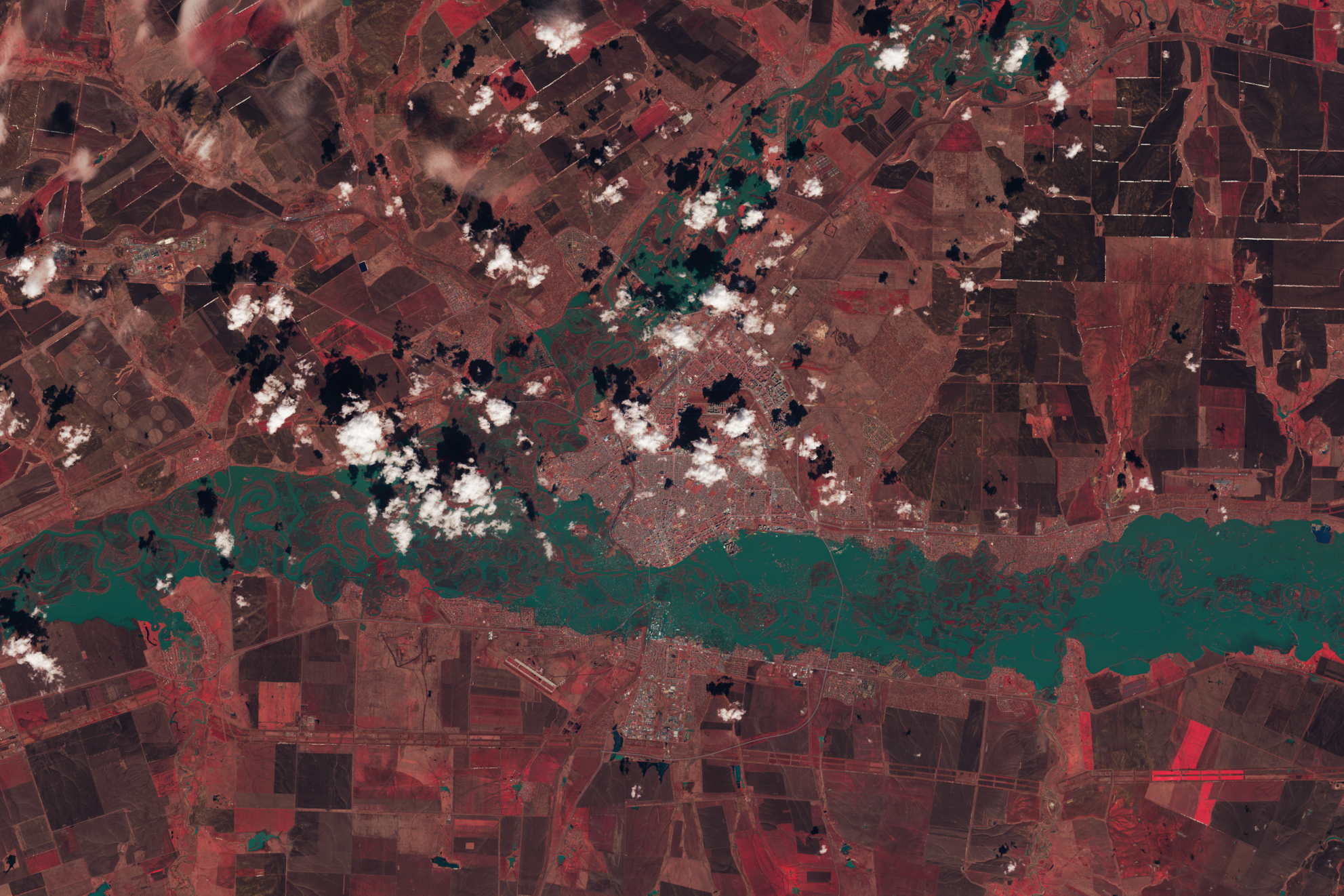Las fotos astronómicas más recientes de la NASA y ESA
Por: Norfi Carrodeguas

La NASA (Agencia Norteamericana de Aeronáutica y del Espacio) y la ESA (Agencia Espacial Europea), publican regularmente en varios de sus sitios web, asombrosas e impresionantes imágenes de la Tierra y del espacio, captadas por los diferentes telescopios terrestres o en órbita.
También lo hacen en varias cuentas de las redes sociales, principalmente en Twitter, como se puede comprobar en otra página: Cuentas de la NASA en Twitter
Todos los aficionados y amantes a la astronomía agradecen estas fotografías.
En esta página que se actualiza automáticamente, se puede ver las fotografías compartidas en las distintas publicaciones oficiales.
Disfrútalas y guarda esta página en las favoritas del navegador.
Las imágenes solo cargan en la medida que nos desplazamos por la página, para evitar el consumo de datos innecesarios.
Las fotos más recientes de la Tierra y del espacio
Astro Picture of the Day (Foto astronómica del día)
Astronomy Picture of the Day, conocido popularmente por sus siglas APOD, es un prestigioso servicio de la NASA, que desde 1995 publica gratis maravillosas fotografías astronómicas.Astro Picture of the Day publica todos los días una imagen de la Tierra o del espacio exterior, con una breve descripción.
Hay copias de las fotografías con diferente resolución, de acuerdo a la web o el sistema empleado, las que se pueden usar libremente.
Se puede acceder a su página principal usando uno de los siguientes enlaces:
Astro Picture of the Day | Astronomy Picture of the Day
Otra opción es seguir la cuenta en Facebook o en Twitter u obtener las imágenes usando el feed RSS.
Además hay aplicaciones móviles disponibles para dispositivos con iOS y con Android.

NASA Image of the Day
Imagen astronómica publicada diariamente en la Galería de imágenes de la NASA, bajo el título "Image of the Day" (Foto del día).La siguiente foto se carga en esta página usando el Feed RSS que brinda el servicio, con una excelente resolución (+4000 px).
Tracking Spring Flooding

Picture of the Week of NASA/ESA Hubble Space Telescope
Fotografía del espacio publicada semanalmente en el sitio web de la Agencia Espacial Europea (ESA), dedicado al Telescopio Espacial Hubble, el que es administrado conjuntamente por esta agencia y la NASA.Feed RSS
Captured on glass


This Hubble Picture of the Week depicts the spiral galaxy ESO 422-41, which lies about 34 million light-years from Earth in the constellation Columba. The patchy, star-filled structure of the galaxy’s spiral arms and the glow from its dense core are laid out in intricate detail here by Hubble’s Advanced Camera for Surveys. Images of this galaxy have, however, a decades-long history.
The name ESO 422-41 comes from its identification in the European Southern Observatory (B) Atlas of the Southern Sky. In the times before automated sky surveys with space observatories such as ESA’s Gaia, many stars, galaxies and nebulae were discovered by means of large photographic surveys. Astronomers used the most advanced large telescopes of the time to produce hundreds of photographs, covering an area of the sky. They later studied the resulting photographs, attempting to catalogue all the new astronomical objects revealed.
In the 1970s a new telescope at ESO’s La Silla facility in Chile performed such a survey of the southern sky, which still had not been examined in as much depth as the sky in the north. At the time, the premier technology for recording images was glass plates treated with chemicals. The resulting collection of photographic plates became the ESO (B) Atlas of the Southern Sky. Astronomers at ESO and in Uppsala, Sweden collaborated to study the plates, recording hundreds of galaxies — ESO 422-41 being just one of those — star clusters, and nebulae. Many were new to astronomy.
Astronomical sky surveying has since transitioned through digital, computer-aided surveys such as the Sloan Digital Sky Survey and the Legacy Surveys, to surveys made by space telescopes including Gaia and the Wide-Field Infrared Survey Explorer. Even so, photographic sky surveys contributed immensely to astronomical knowledge for decades, and the archives of glass plates serve as an important historical reference for large swathes of the sky. Some are still actively used today, for instance to study variable stars through time. And the objects that these surveys revealed, including ESO 422-41, can now be studied in depth by telescopes such as Hubble.
[Image Description: A spiral galaxy, with a brightly shining core and two large arms. The arms are broad, faint overall and quite patchy, and feature several small bright spots where stars are forming. A few foreground stars with small diffraction spikes can be seen in front of the galaxy.]
Links
Últimas fotos de Explore Earth, de la NASA
Explore Earth es otra sección del sitio web de la NASA, dedicado a nuestro planeta.Publican activamente contenido de interés, el que también se puede encontrar en su cuenta de Twitter NASA Earth, de la que impregnamos a continuación en esta página, las tres últimas publicaciones.
NASA Earth
Para aficionados a la web o desarrolladores
La primera de las imágenes se escribe en esta página, usando la librería de PHP "simplehtmldom", que permite capturar cualquier elemento HTML en una página de internet.Las restantes imágenes se escriben con PHP, extrayendo los datos del Feed en formato XML que proporcionan estos servicios para lectores habituales de noticias, como explico en el siguiente artículo: Extraer con PHP contenido de un XML
Páginas relacionadas
✓ Las mejores fotos e imágenes de la Luna
✓ Imágenes y fotos espectaculares del universo y espacio exterior
✓ Efemérides y fechas destacadas de la exploración del universo
✓ Los mejores sitios y páginas de internet sobre astronomía
✓ Clasificación de los objetos estelares en la astronomía
✓ Últimas noticias y publicaciones de la NASA en Twitter
Comparta esta página